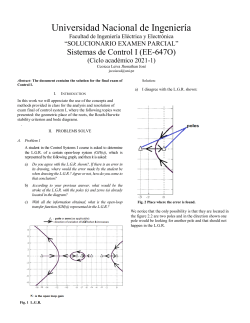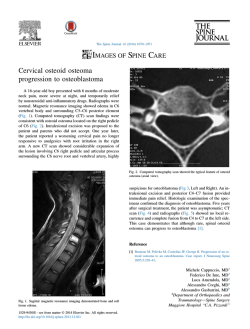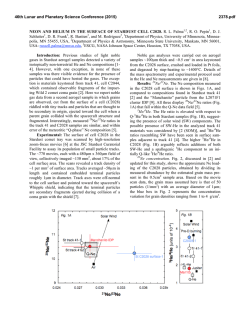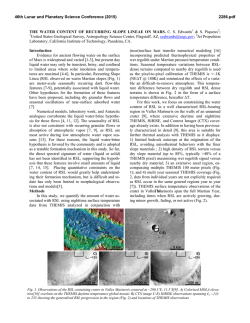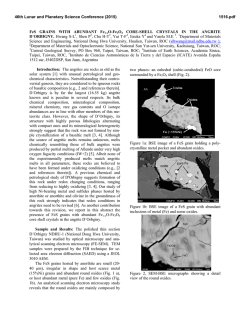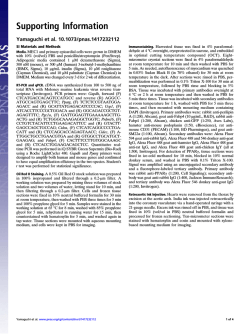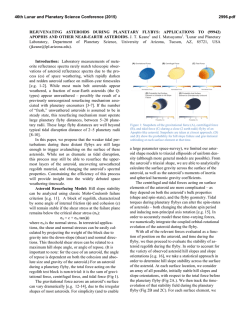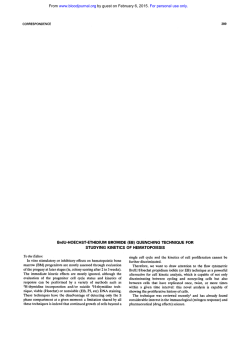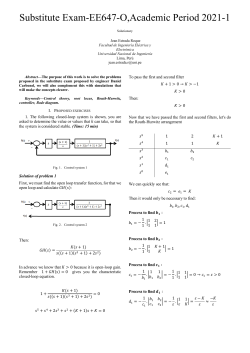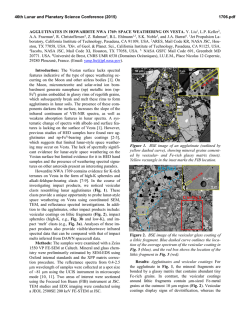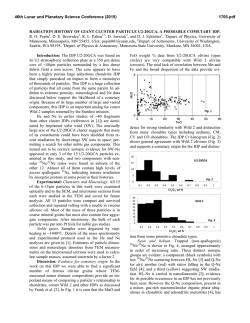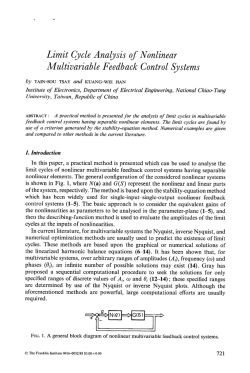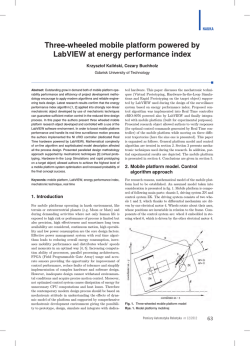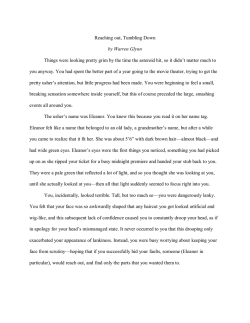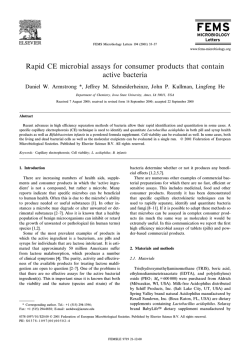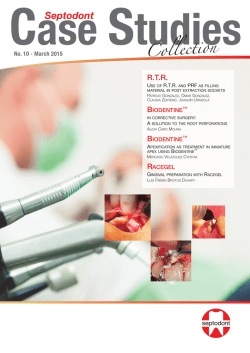
2449
46th Lunar and Planetary Science Conference (2015) 2449.pdf THERMALLY-DRIVEN REGOLITH EVOLUTION ON SMALL ASTEROIDS. M. Delbo1, G. Libourel2,3, J. W. Wilkerson4, N. Murdoch5, P. Michel1, K. T. Ramesh6, C. Ganino3, C. Verati3, and S. Marchi7, 1Laboratoire Lagrange, UNS-CNRS, Observatoire de la Côte d’Azur, Boulevard de l’Observatoire- Nice Cedex 4, France ([email protected]), 2Université de Lorraine, CRPG-CNRS, 15 Rue Notre-Dame des Pauvres, BP 20, 54501 Vandoeuvre les Nancy, France, 3Laboratoire Géoazur, UNS-CNRS, Observatoire de la Côte d’Azur, 250 rue Albert Einstein, Les Lucioles 1 Sophia-Antipolis, 06560 Valbonne, France, 4Dept. of Mechanical Engineering, University of Texas at San Antonio, One UTSA Circle, San Antonio, TX 78249, 5Institut Supérieur de l’Aéronautique et de l’Espace, 10 avenue Edouard-Belin, BP 54032, 31055 Toulouse Cedex 4, France, 6Hopkins Extreme Materials Institute, Johns Hopkins University, 3400 North Charles Street, Malone Hall Suite 141, Baltimore, MD 21218, 7Solar System Exploration Research Virtual Institute, Institute for the Science of Exploration Targets, Southwest Research Institute, 1050 Walnut Street, Suite 300, Boulder, CO 80302. Introduction: The surfaces of rocky bodies in the Solar System (e.g. the Moon, Mars, and asteroids) are composed of a layer of centimeter-sized or smaller particles termed regolith. Regolith generation and evolution has traditionally been attributed to the fall back of impact ejecta and to the comminution of surface boulders by micrometeorite [1,2]. Since ejecta velocities typically exceed the gravitation escape velocity of small (i.e. kilometer-sized) asteroids [1,3], it was widely anticipated that fine regolith would be absent from such small asteroids. Nevertheless, the images and recovered material from Hyabusa revealed that the surface of (25143) Itokawa was indeed composed of fine regolith similar to larger airless bodies (e.g. the Moon). In a recent publication [4], we combine laboratory experiments and mechanism-based modeling to demonstrate the effectiveness of an alternative regolith generation and evolution mechanism driven by diurnal temperate variations rather than impact processes. variations experienced on the surface of rotating asteroids (see Fig. 1). On the microscale this damage and degradation manifests as the extension of pre-existing cracks by a small increment on each loading cycle. Eventually, these thermally-driven cracks reach a critical size and the body fragments into smaller pieces (see Fig. 2). In contrast to the early primitive experiments [5], there is growing observational evidence that thermal fatigue and fragmentation is an active process on marble, granites, desert rocks, and now asteroids [68, 4]. Fig. 2: Schematic of thermally-driven regolith evolution. Fig. 1: Computed diurnal surface temperature excursions on asteroids as a function of heliocentric distance. Physical process: Fatigue is the progressive structural damage and degradation of materials as a result of the application of cyclic stresses. One source of such cyclic stresses is the rather large diurnal temperature Laboratory experiments: In order to study the rate at which thermally-driven cracks propagate through asteroidal materials, we perform laboratory experiments on two meteorites: a carbonaceous chondrite (CM2 Murchison) and an ordinary chondrite (L/LL3.2 Sahara 97210). The two meteorites are considered the closest available analogues of the broad asteroid spectroscopic classes C and S, respectively. Experimental methodology: Our protocol consisted of utilizing a climatic chamber to subject these meteorites to temperature variations that approximate the diurnal variations experience on a typical NEA surface. The temperature cycle period was taken to be 2.2 hours, and the magnitude of the temperature excursion, ΔT, was taken to be 190 K corresponding to C-type NEAs at ~0.7 AU (see Fig. 1). Crack lengths are measured utilizing X-ray tomography following a prescribed number of thermal cycles. 46th Lunar and Planetary Science Conference (2015) Proof of thermally-driven crack growth. After subjecting the meteorite samples to 407 thermal cycles, we observe a measurable extension of a number of preexisting cracks (see Fig. 3 & 4). Under these laboratory conditions, our measurements show that pre-existing cracks extend at a rate of about 0.5 mm/year. use of a conservative definition of rock fragmentation in our model, namely that an initial 30-micron-long crack grows to a length equal to the rock diameter. Shorter cracks can still produce fragments, either by merging with other growing cracks or by a flaking mechanism (a model for which is currently being developed). Prediction of time required for thermally-driven vs. impact-driven fragmentation. Our model predictions for the time required to thermally fragment rocks on the surface of a carbonaceous chondrite-like asteroid are reported in Fig. 5 for a number of rock sizes. Fig. 5 also includes a classical model prediction [2] for the time required to break-up a boulder on the surface of an asteroid by impact processes. Fascinatingly, it appears that thermally-driven fragmentation can be orders of magnitudes faster than fragmentation by some classical impact mechanisms. Rock diameter (cm) Fig. 3: Experimental observations of fatigue crack growth in Murchison (CM2) induced by 407 thermal cycles. 2449.pdf 10 8 6 5 4 3 2 1 Fig. 4: Crack size is shown as a function of the number of thermal cycles predicted by our model (lines) and compared with our experimental measurements (symbols) for each meteorite. Model predictions: Our laboratory measurements indicate a very fast rate of crack propagation in relation to the age of the Solar System. However, it is unclear whether such a fast rate of crack propagation would be maintained as the crack becomes larger. To address such issues we developed a mechanism-based model capable of estimating the time required to fragment rocks of a given size on the surface of an asteroid. Modeling approach: Our mechanism-based model is based on well-established thermal diffusion [9], thermomechanical [10], and fracture mechanics [11] models in order to analyze the progressive crack growth from early stages (notice the model-experiment agreement shown in Fig. 4) to final fragmentation as shown in Fig. 2. The day-night temperature variations, temperature gradients and mechanical stresses are calculated using boundary conditions appropriate for asteroid surfaces radiatively heated by the Sun. We make 1 10 2 10 3 10 4 10 5 10 6 10 7 10 8 10 9 10 Survival time (yr) Fig. 5: Time required to break rocks on the surface of a carbonaceous chondrite-like asteroid at 1 AU. Symbols show the time required to thermally fragment 90% of the rocks, with the thick dashed line indicating the time required to fragment the same set of rocks by micrometeoroid impacts. Error bars capture uncertainties in model parameters. References: [1] Housen K. R. et al. (1979) Icarus, 39, 317-351. [2] Hörz F. & Cintala M. (1997) Meteorit. Planet. Sci., 32, 179-209. [3] Housen K. R. & Holsapple K. A. (2011) Icarus, 211, 856-875. [4] Delbo M. et al. (2014) Nature, 508, 233-236. [5] Griggs. (1936) J. Geol., 44, 783-796. [6] Luque A. et al. (2011) Environ. Earth Sci., 62, 1375-1386. [7] McFadden L. et al. (2005) Geol. Soc. Am. Bull., 117, 161-173. [8] Hall K. and Andre M. (2001) Geomorphology, 41, 2335. [9] Spencer J. R. et al. (1989) Icarus, 78, 337-354, [10] Čapek D. & Vokrouhlicky D. (2010) Astron. Astrophys., 519, A75. [11] Janssen M. et al. (2004) Fracture Mechanics, 207-213.
© Copyright 2025
